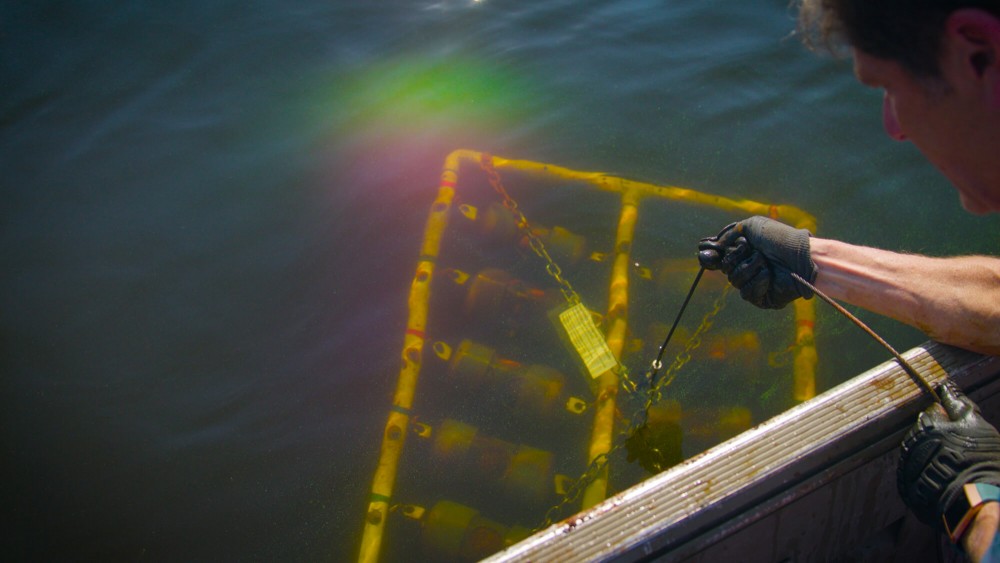GVSU professor turns attention to Great Lakes plastic pollution

Courtesy / Tony Packer
Sep 24, 2018
Spanning 94,000 square miles, the Great Lakes are one of North America’s most impressive topological features. The five lakes contain 21 percent of Earth’s total freshwater and act as an invaluable resource for the millions of people who live in close proximity to their shores.
As many people enjoy swimming, boating and fishing on the lakes, a new threat has emerged, endangering the long-term health and prosperity of the expansive bodies of water. Man-made micro-plastics, created from the degradation of plastic waste in water, is becoming a major concern within the Great Lakes. Fish and other organisms consume the plastics, which then makes its way into the food chain, endangering other organisms and disrupting the existing ecosystems.
Alan Steinman, professor and director of the Annis Water Research Institute (AWRI) is conducting research on which organisms are attracted to in micro-plastics. Doing so will provide a better understanding of how these plastics interact with the base of the food chain, illustrating their negative effects within the Great Lakes.
The research will be conducted on Muskegon Lake due to the Research Institute’s familiarity with the site as well as the extensive data collected on the lake in the past.
”AWRI is located on Muskegon Lake, so it was a natural choice for our logistics,” Steinman said. “In addition, we have been studying Muskegon Lake for the past 15 years and have a robust long-term data set, so we will be able to put our results into context. We did want to have one set of micro-plastics in Lake Michigan to compare a very low-nutrient lake vs a moderate-nutrient lake but could not arrange for a buoy in Lake Michigan from which to deploy our frames.”
Alexandra Locher, professor within the Natural Resources Department, sees the push towards reusable items such as personal grocery bags and water bottles as a vital step in curbing plastic pollution in the Great Lakes.
“I really think that initiatives to use renewable and reusable resources would go a long way in reducing the amount of plastics within the Great Lakes,” Locher said. “For instance, using thermos bottles or avoiding plastic straws at picnics on the beach would reduce the amount of plastic that gets blown or washed into the water. Companies are starting to get creative using renewable products like paper (i.e., plant-based straws) that are manufactured in innovative ways to be durable and functional.
“Conservation initiatives such as the Forest Biomaterials Initiative, which Michigan seems to be interested in pursuing, will help companies and consumers develop alternatives to using plastic for many things.”
Researching micro-plastics in Muskegon Lake will determine which plastics are most harmful for the environment and will give a better understanding of how the pollutants interact with species within the lakes. Establishing which species are attracted to the micro-plastics may yield answers in how to best mitigate the pollution within the lakes.
Steinman says that while certain species are expected to be attracted to the micro-plastics, there are other factors that cause the plastics to degenerate.
“We expect algae, bacteria and fungi to colonize the micro-plastics, but we don’t know which species or taxa will be present,” Steinman said. “Yes, the plastics will break down over time, usually due to physical fragmentation or UV light, not necessarily due to biota.”
While the Great Lakes will likely avoid a garbage patch such as the one existing in the central Pacific, plastic pollution from streams and rivers will continue to flow into the lakes, eventually accumulating on the beaches.
With the health and vitality of the Great Lakes directly tied to that of Michigan, Steinman sees an opportunity for students to get involved and help improve the environment we often take for granted.
“There are periodic beach and river clean ups around west Michigan, sponsored by the Alliance for the Great Lakes and the West Michigan Environmental Action Council, which collect lots of plastics; in addition, changing individual behavior so that they buy fewer products with plastic if alternatives are available, such as metal water bottles vs plastic bottles,” Steinman said. “Students can also ask their advisers to do undergraduate research projects around plastic – it need not be biological or chemical, as surveys regarding people’s attitudes toward plastic or knowledge about plastic is also very worthwhile.”
Sitting among the largest lakes in the world, Lake Michigan has over 3,200 miles of sparkling freshwater coastline between its two peninsulas. Ensuring that future generations can enjoy its beauty requires current residents to be good stewards of available resources. Limiting plastic pollution, recycling and cleaning existing bodies of water will not only create a more enriching environment in the short term, but will lay the groundwork necessary in ensuring that the Great Lakes remain one of the most beautiful and awe-inspiring regions on the planet.






















